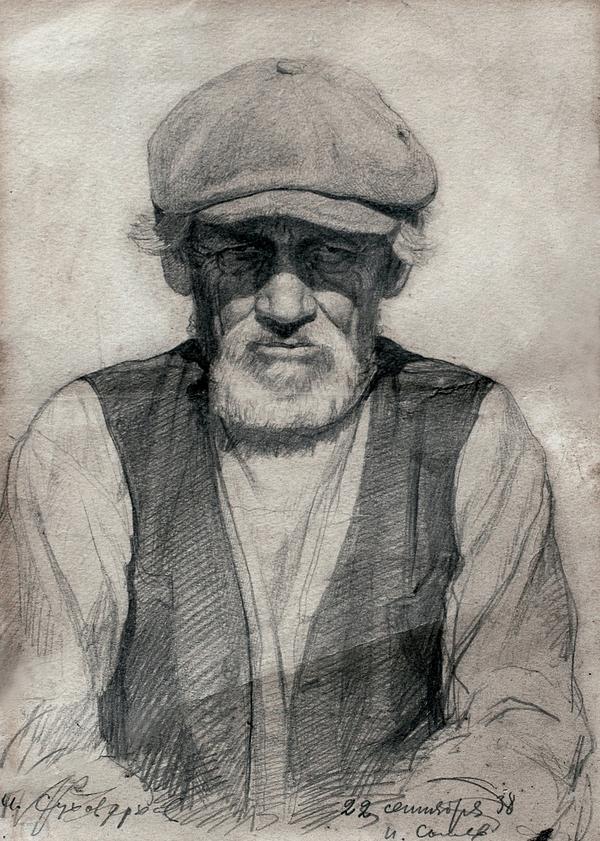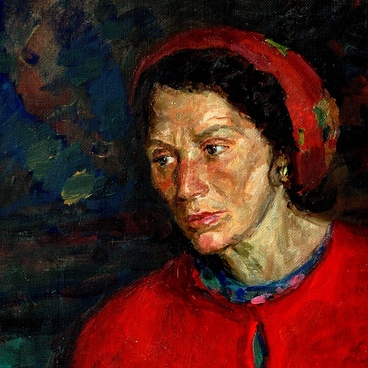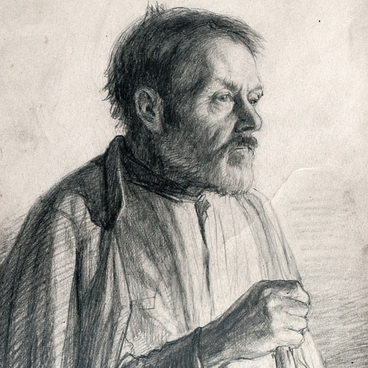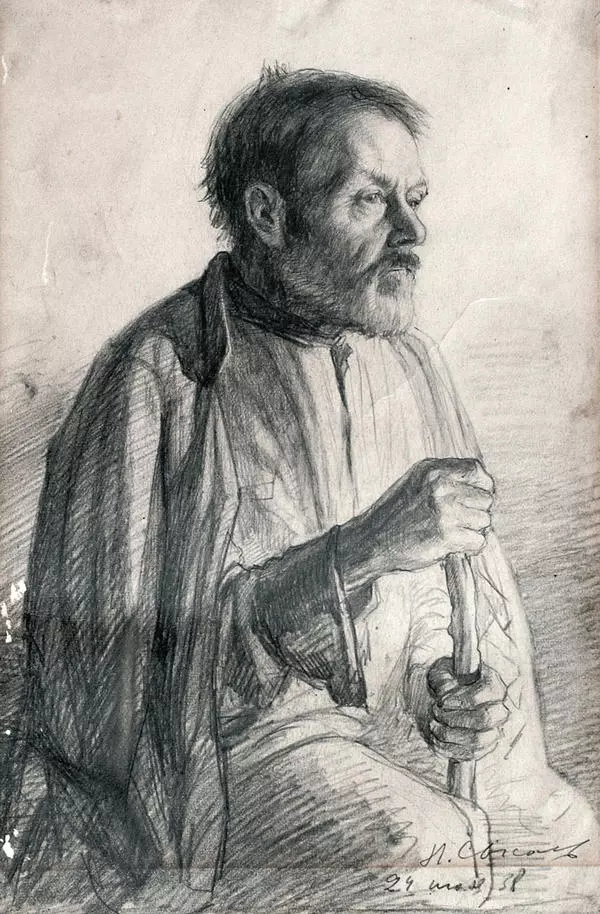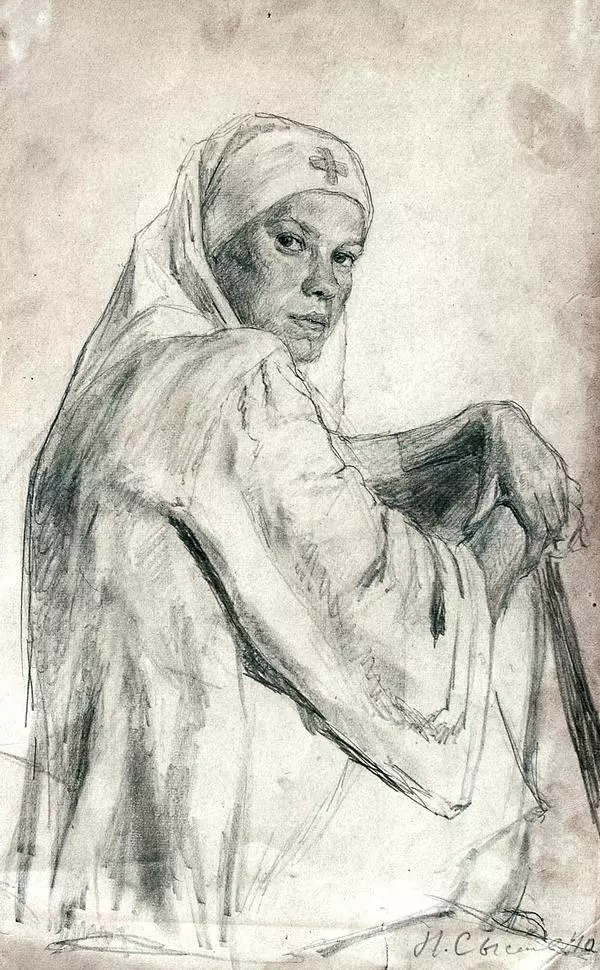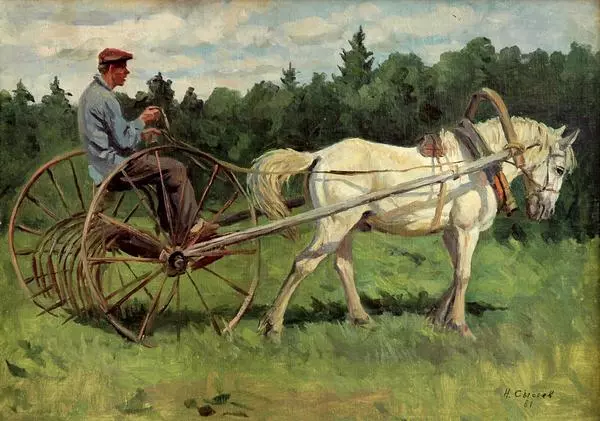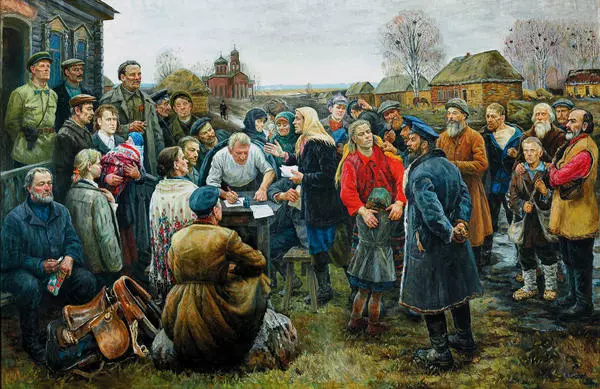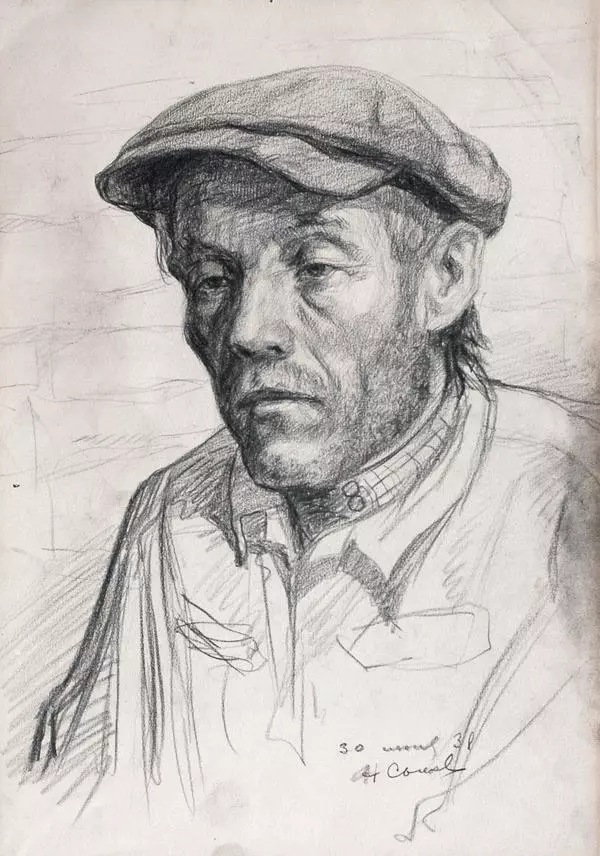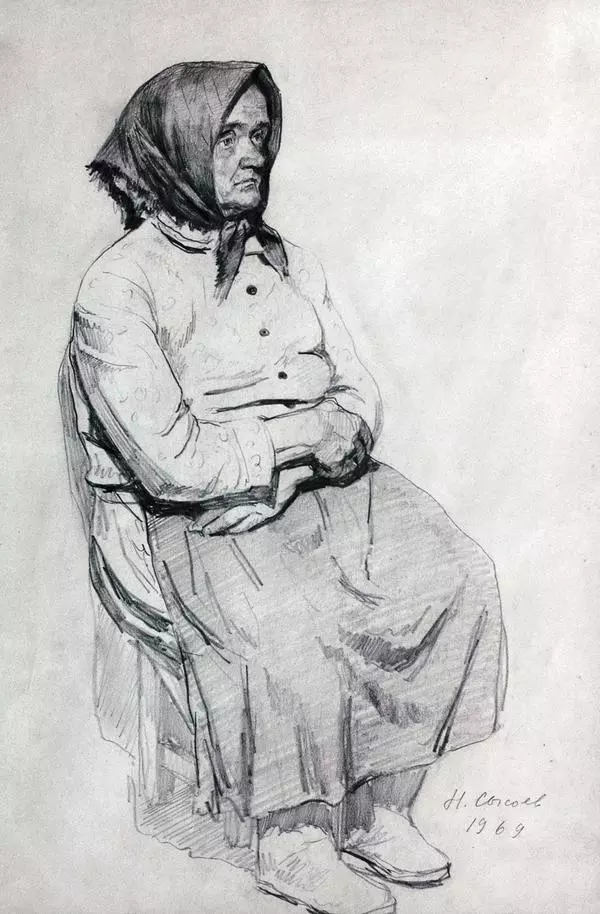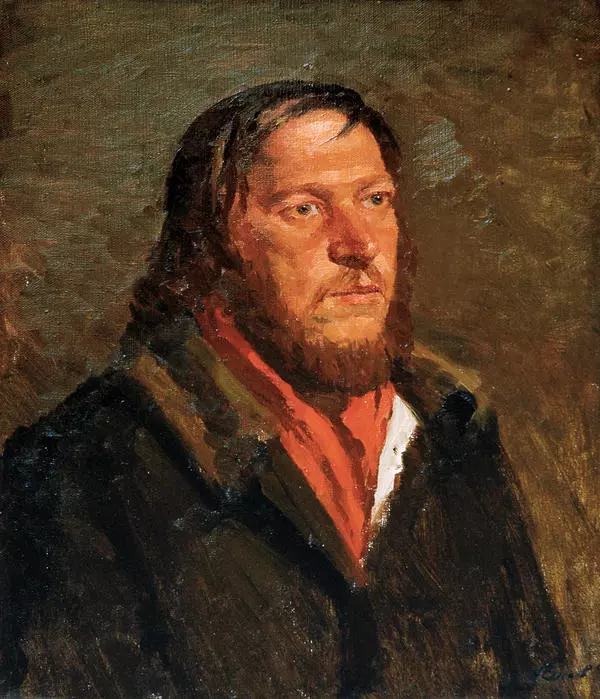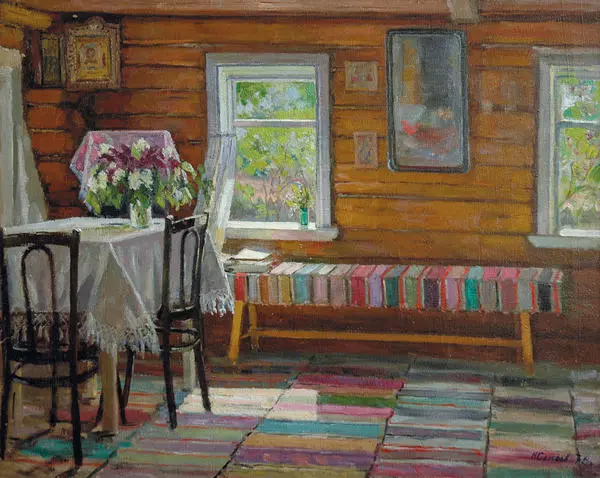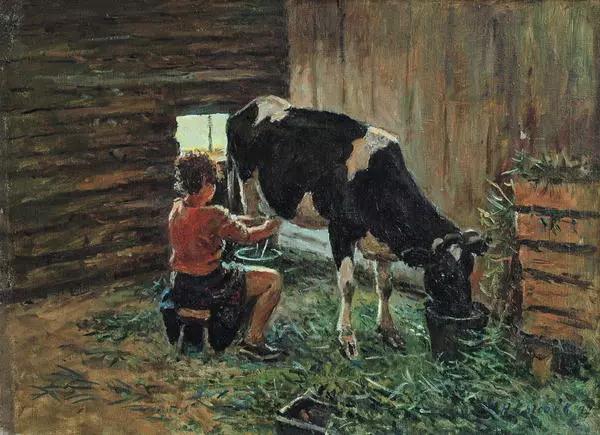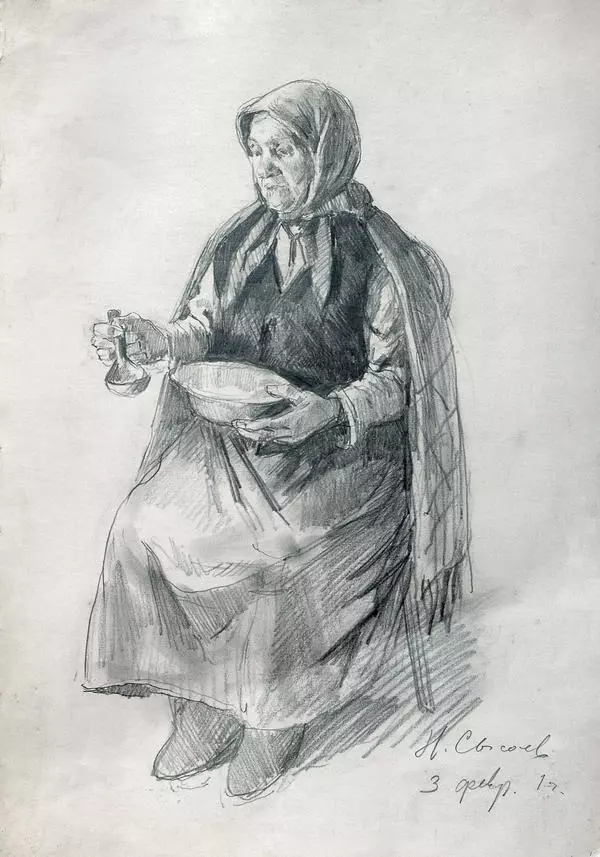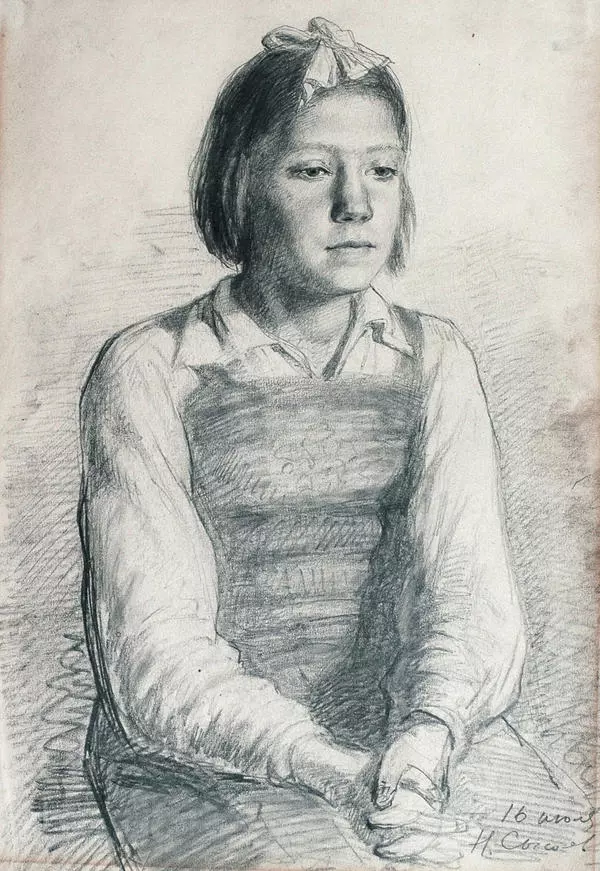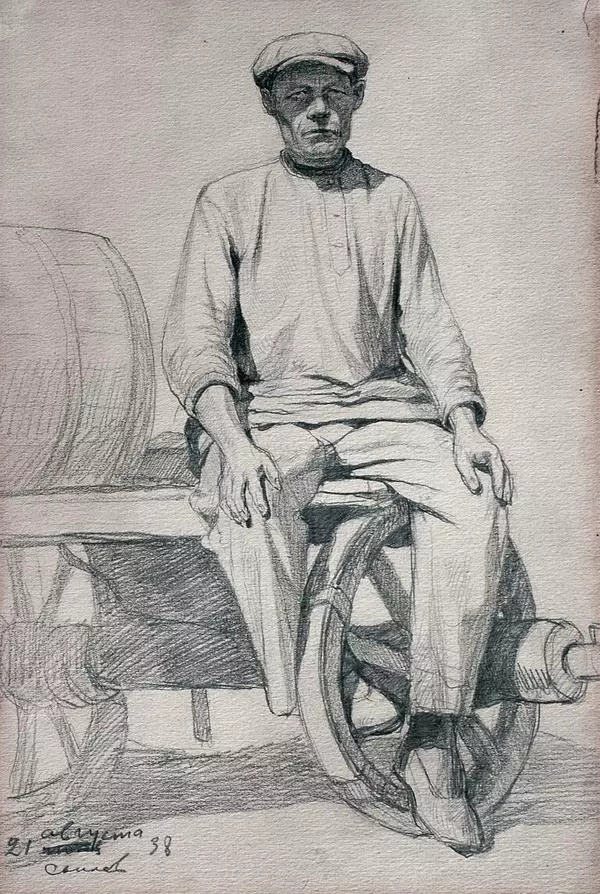One of Nikolai Sysoev’s most iconic works was the canvas Collectivization, the first version of which the artist painted in 1957. Sysoev had been doing preliminary work for the painting long before starting the final project — even as far back as when he was studying at the institute. The artist himself was first exposed to collectivization at the age of 10 and remembered the atmosphere in his native village of Slanskoye, where he lived until he was 13 years old. Even when he was studying at the institute, he often returned to his native town to make studies and had a great interest in creating images of his fellow villagers. It was here that he collected material for the painting Collectivization and looked for suitable types of people who experienced this event.
Sysoev cited such 20th century realist artists as Ilya Repin and Vasily Surikov as his influences, but he happened to be working a century later when the style of socialist realism was dominating the country.
“In a broad sense, I view socialist realism as a continuation of the traditions of Russian realism in modern reality and as the only method of reflecting life without distortion. Waves of leftist trends in art come and go, but realism remains. It recreates the image of the era. Without it, our ideas about the past and about history would not be complete. In my opinion, realism will never die”, Sysoev wrote about the dominant style of art in the mid-20th century.
The black and white portrait depicts a peasant by the name of Sukhoverkhov. This sketch is probably part of preparatory work for a future painting. After all, judging by the age of the man, he lived through the period of collectivization and clearly remembers how it affected the fate of the villagers. The peasant has a stern and severe stare. The artist makes no effort to hide the hardships of the man’s life and conveys his character and mood in a manner that is crystal clear.
Socialist realism proclaimed: ‘Art belongs to the people’. Folk art galleries were created during the Soviet years and referred to as ‘small Tretyakov galleries’. Their main objective was to make art more accessible to the people. Nikolai Sysoev, along with his wife Nina Skorubskaya, was actively involved in creating an art gallery in the Lipetsk Region village of Lev Tolstoy in 1987. The next fifteen years of the artist’s life were inextricably linked with this gallery.
Sysoev cited such 20th century realist artists as Ilya Repin and Vasily Surikov as his influences, but he happened to be working a century later when the style of socialist realism was dominating the country.
“In a broad sense, I view socialist realism as a continuation of the traditions of Russian realism in modern reality and as the only method of reflecting life without distortion. Waves of leftist trends in art come and go, but realism remains. It recreates the image of the era. Without it, our ideas about the past and about history would not be complete. In my opinion, realism will never die”, Sysoev wrote about the dominant style of art in the mid-20th century.
The black and white portrait depicts a peasant by the name of Sukhoverkhov. This sketch is probably part of preparatory work for a future painting. After all, judging by the age of the man, he lived through the period of collectivization and clearly remembers how it affected the fate of the villagers. The peasant has a stern and severe stare. The artist makes no effort to hide the hardships of the man’s life and conveys his character and mood in a manner that is crystal clear.
Socialist realism proclaimed: ‘Art belongs to the people’. Folk art galleries were created during the Soviet years and referred to as ‘small Tretyakov galleries’. Their main objective was to make art more accessible to the people. Nikolai Sysoev, along with his wife Nina Skorubskaya, was actively involved in creating an art gallery in the Lipetsk Region village of Lev Tolstoy in 1987. The next fifteen years of the artist’s life were inextricably linked with this gallery.

